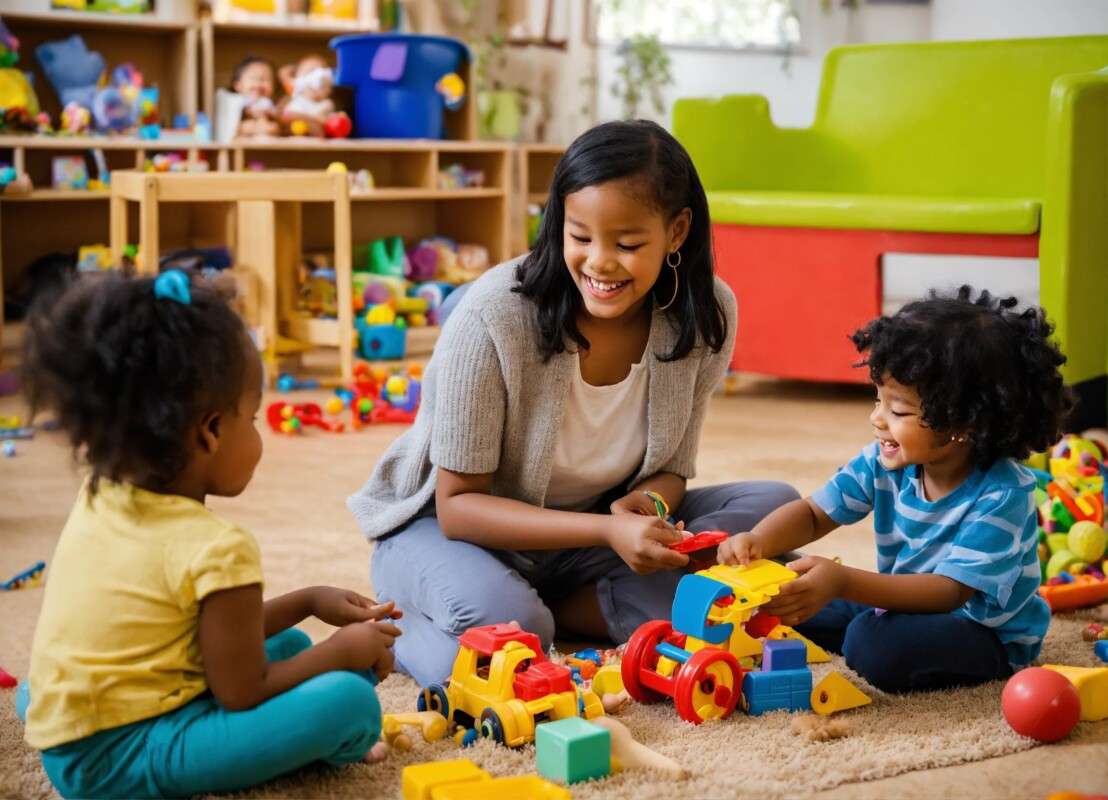1. Start Early:
Begin fostering language skills from infancy. Even before your kids can speak, engage in simple interactions like cooing, babbling, and responding to their sounds. This early communication helps lay the groundwork for language development.
2. Create a Language-Rich Environment:
Surround your child with language-rich surroundings. Talk to them during daily activities, describe what you’re doing, and introduce new words. Reading books together is an excellent way to expose them to a variety of words and concepts.
3. Use Simple and Repetitive Language:
When communicating with your child, use simple and repetitive language. Repetition helps reinforce new words and concepts, making it easier for your child to grasp and imitate.
4. Respond to Your Child’s Attempts to Communicate:
Pay close attention to your child’s attempts to communicate, whether through gestures, facial expressions, or babbling. Respond positively, showing them that communication is a two-way street. This encourages them to continue expressing themselves.
5. Sing and Play with Rhymes:
Singing and playing with rhymes can be engaging and educational. Rhymes help children recognize patterns in language, making it easier for them to pick up new words. Nursery rhymes and songs with repetitive lyrics are particularly beneficial.
6. Imitate Your Child:
Imitate your child’s sounds and babbling. This not only shows that you’re paying attention but also encourages them to continue experimenting with different sounds. It’s a fun and interactive way to build a communication bridge.
7. Use Gestures and Facial Expressions:
Incorporate gestures and facial expressions into your communication. This visual support can help your child understand the meaning of words and phrases, facilitating their language comprehension.
8. Encourage Play with Peers:
Social interactions with peers are crucial for language development. Arrange playdates or join parent-child groups to expose your child to different communication styles and encourage them to engage with others.
9. Limit Screen Time:
Minimize screen time, especially for very young children. Excessive exposure to screens can hinder language development. Instead, focus on real-world interactions, face-to-face communication, and hands-on activities.
10. Expand on Their Utterances:
When your child starts saying single words or short phrases, expand on their utterances. If they say “car,” you can respond with “Yes, a red car!” This helps build their vocabulary and encourages more complex language use.
11. Create a Communication-Rich Routine:
Establish consistent routines and rituals. Discussing daily activities, such as meals, bedtime, and playtime, provides opportunities for your child to learn new words and understand the structure of conversation.
12. Offer Choices:
Provide your child with choices throughout the day. This not only encourages decision-making but also exposes them to a variety of words. For example, ask, “Do you want an apple or a banana for a snack?”
13. Read Together Every Day:
Reading is one of the most effective ways to promote language development. Make reading a daily habit, choosing books with colorful pictures and engaging stories. Encourage your child to comment on the pictures or predict what happens next.
14. Use Play as a Learning Tool:
Play is a powerful tool for language development. Engage in imaginative play with your child, using dolls, action figures, or stuffed animals. Create scenarios that involve conversation, allowing your child to practice different roles and scenarios.
15. Provide a Variety of Experiences:
Expose your child to diverse experiences. Visits to the zoo, park, or grocery store offer opportunities to learn new words and concepts. Discuss what you see and experience together, expanding their vocabulary in real-world contexts.
16. Be Patient and Responsive:
Patience is key in language development. Allow your child to express themselves at their own pace, and be responsive to their attempts to communicate. Avoid rushing or interrupting, giving them the time they need to formulate their thoughts.
17. Celebrate Communication Milestones:
Celebrate your child’s communication milestones. Whether it’s their first word, a longer sentence, or expressing a complex idea, acknowledge and praise their efforts. Positive reinforcement reinforces the joy of communicating.
18. Model Proper Pronunciation:
Model correct pronunciation and grammar in your own speech. Children often learn by imitation, so hearing proper language use from caregivers is crucial for developing clear and accurate communication skills.
19. Consult a Speech-Language Pathologist if Needed:
If you have concerns about your child’s speech and language development, don’t hesitate to consult a speech-language pathologist. Early intervention can address potential challenges and provide strategies for supporting your child’s communication skills.
20. Encourage Storytelling:
As your child’s language skills progress, encourage storytelling. Ask open-ended questions, prompt them to describe their day, or create imaginative stories together. This fosters creativity, expands vocabulary, and enhances narrative skills.
In conclusion, teaching your child to talk involves creating a language-rich environment, fostering positive interactions, and engaging in activities that support their developmental needs. Through consistent and supportive efforts, you can empower your child to become an effective communicator, setting the stage for a lifetime of successful interactions and learning.

































